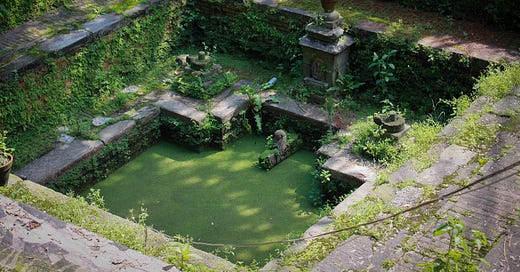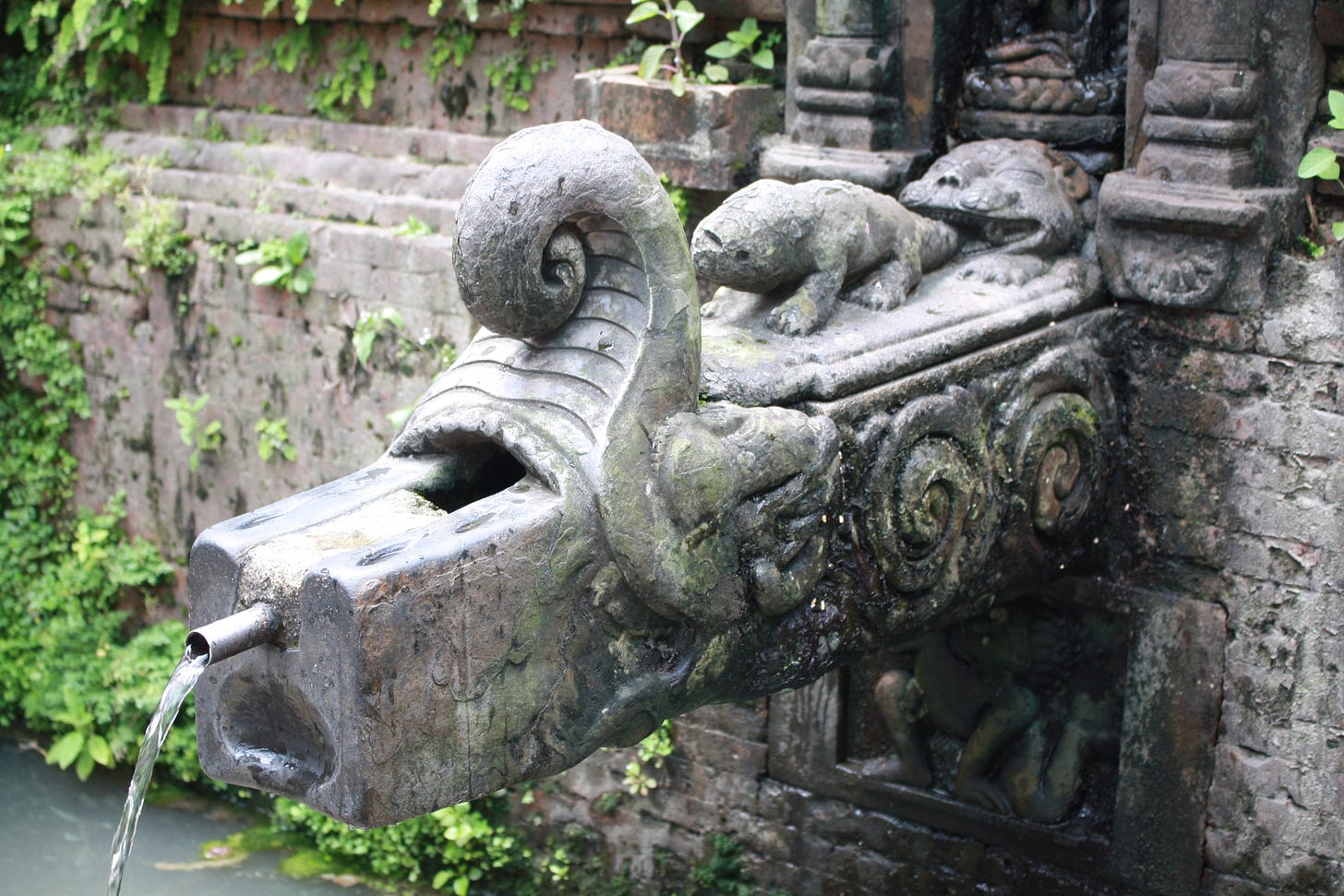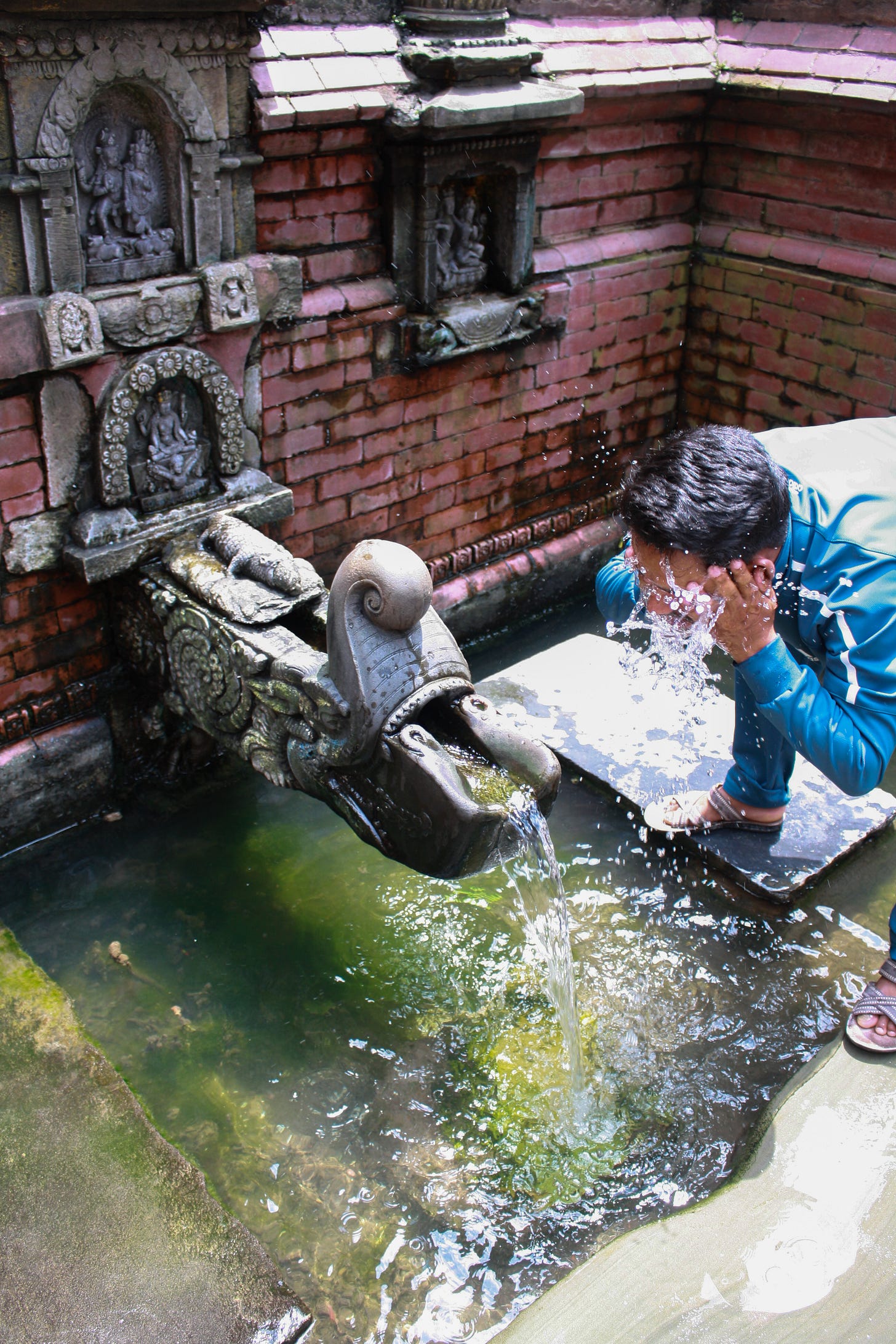Not Just Stone and Water: Rethinking Heritage Through Kathmandu's Hitis
Asmi Shrestha, Mount Holyoke College
Keywords: Hitis; indigenous water systems; living heritage; water management
When you've grown up living amongst forms of cultural heritage, you forget to think twice about it. From traffic to promises about a reliable municipal water system. There's a lot of noise around urbanization that may distract you. But the silence is deafening when it comes to the implementation of such promises.
Usually, the people facing the brunt of flaky bureaucrats are not the ones who can afford private access to drinking water.
As I reflect on this now, it's striking how the familiar becomes invisible - we walk past our heritage every day without truly seeing it. But there's something so distracting when we describe something as cultural heritage. Not to negate this idea, of course, but the term is distracting because it attaches a nasty, ornamental connotation to heritage.
Must cultural heritage only be defined in the binary of being tangible and intangible? This idea must be challenged because heritage is something that constantly interacts with society. Perhaps not in ways that we imagine, but the Hitis of Kathmandu Valley are such an example. With water running through these stone taps, supplying safe drinking water to the urban populations of Kathmandu Valley, there's something that makes this relationship with heritage continuous...living.
This is not my own original thought, of course, but in my conversations with Mr. Sushil Shrestha, a trailblazer in his own right, he coined the term "living heritage" to describe the Hitis of Kathmandu Valley. What it means for heritage to be living is that it's not stagnant in any way. How can something that's 1500 years old and still functioning to supply water to the populace not be living? It is almost problematic to assume that infrastructure can only be cultural and not continuous. And this brings me to the context of the urban and the rural. The urban-rural divide, within the context of the Hitis, can be discussed in so many ways, but the lens I will apply is the matter of priority... or the lack of prioritizing.
My attempt in this blog is to blur the lines between the Urban and Rural and to think about the modern and archaic. Why are modern solutions reserved for the urban, and the ‘archaic’ viewed as provisional solutions for the rural?
This mindset is heavily reflected in government policies, where the ruse of modernity casts a shadow over our indigenous systems. The irony here lies in how the Hitis continue to quench the thirst of hundreds throughout the valley while elaborate plans for water management and distribution gather dust in municipal offices. The neglect isn't even subtle anymore; it's written into budget lines that prioritize "development" over maintenance, as if the two couldn't coexist (Maharjan, 2024) . While some local officers further patronize the population by using the preservation of Hitis as rhetoric to gain political favor around elections. These stone spouts, these tireless givers of water, become afterthoughts in policy discussions, treated more like relics to be photographed than living systems to be nurtured (Joshi, 2022).
But perhaps more concerning than our obvious bureaucratic afflictions is the growing disconnect between what we know and what we're forgetting. The knowledge of Hitis isn't something you can download or learn from a textbook - it lives in the hands of communities. It was only when I started filling in my knowledge gaps about Hitis that I realized there were entire chasms yet to be bridged. Conducting research over the summer was extremely fulfilling, yet it enlightened me that this knowledge regarding Hitis cannot just be attained over the span of a few months.
The secrets of Hitis lie in the stories of elders who have watched the water flow through generations. As urban expansion perturbs the foundations of Kathmandu Valley, we are losing libraries of wisdom about this unique infrastructure, underground water channels, and the intellectual histories of our ancestral communities. The people who know these stories are aging, and their knowledge struggles to find new keepers in a world obsessed with instant solutions. The gap widens with each passing year, each elder who leaves us, each young person who moves away.
Yet, we are seeing a remarkable phenomenon: as these systems face neglect, there's a growing recognition of their relevance. When modern systems fail, people rediscover the reliability of their neighborhood Hiti. Young activists and researchers are starting to ask questions, documenting what remains of these systems and learning from communities that never stopped using them. Individuals like Mr. Sushil Shrestha have taken massive strides in this direction by taking the personal initiative to restore the Alko Hiti in Ikkhachhen, Patan, where 250 households now have access to water through a pipe system. This demonstrates not only how traditional water sources can be adapted to serve contemporary needs but also how people are deeply committed to restoring and maintaining Hitis in the face of bureaucratic disinterest. There's a dawning realization that perhaps these aren't just remnants of the past but blueprints for a sustainable future. This renewed interest isn't just about preserving heritage anymore; it's about understanding how our ancestors solved problems we still grapple with today.
When I was back home over the summer, many people questioned the relevance of my research. What's the point, they asked. My answer is this: even though some of us can live without worrying about water as a scarce resource, this privilege reeks. Just because some can afford water through pipes and water tankers doesn't mean that a significant population doesn't rely on these Hitis in their daily lives (Seddon, 2020).
The Hitis are teaching us that sometimes, the most resilient solutions are the ones that have been flowing quietly all along. It's almost tragic how something so integral to society has been swept aside, framed as 'rural' and 'archaic.' Perhaps we get swept away in larger, broader conversations about politics and water security, forgetting that the solution has been flowing right down the road from our house all along.
References:
Manandhar, Amanda. “Preserving the Valley’s Water Heritage ” The Kathmandu Post, June 24, 2023. https://kathmandupost.com/columns/2023/06/24/preserving-the-valley-s-water-heritage
— Asmi Shrestha
Author’s Bio

Connect with us at:
Thanks for reading Just Rural Futures! Subscribe for free to receive new posts and support my work.






